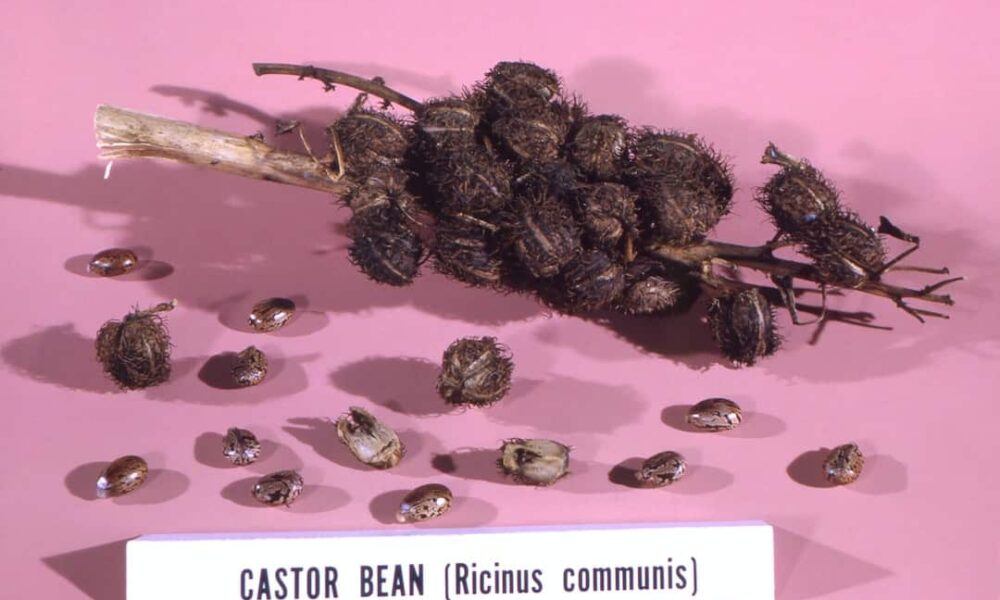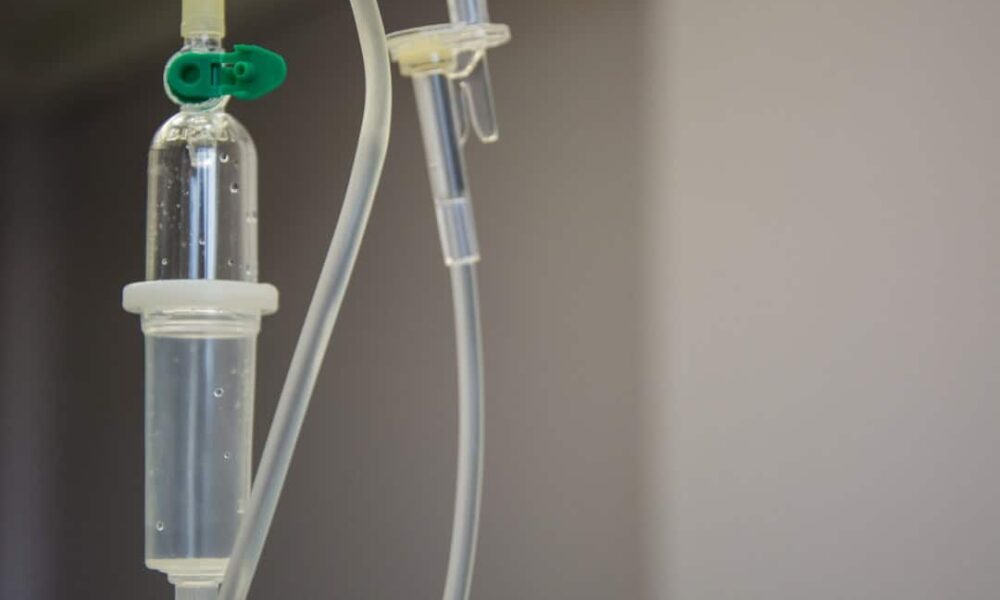Poison sumac is a plant that can cause severe allergic reactions in…
Poison Oak: The Itchy Truth and How to Avoid It

Poison oak is a common plant found in North America that can cause an itchy and uncomfortable rash. It is important to be able to identify poison oak and take precautions to avoid coming into contact with it. In this article, we will explore what poison oak is, how it causes itching, how to identify it, the different forms of poison oak rash, how long the rash lasts and how it is treated, whether or not it can be spread from person to person, the importance of proper clothing and gear to avoid poison oak, how to remove poison oak from your skin and clothes, the best ways to prevent exposure, what to do if you come into contact with poison oak, when to see a doctor for poison oak rash and complications, and some final thoughts on prevention and treatment.
What is Poison Oak and How Does it Cause Itching?
Poison oak, scientifically known as Toxicodendron diversilobum, is a plant that belongs to the cashew family. It is commonly found in wooded areas, forests, and along hiking trails in North America. The plant contains an oil called urushiol, which is responsible for causing an allergic reaction in many people. When urushiol comes into contact with the skin, it can cause itching, redness, and a rash.
Urushiol is a potent allergen that can cause an allergic reaction in most people who come into contact with it. When urushiol touches the skin, it binds to proteins on the surface of skin cells. This triggers an immune response in the body, leading to the release of histamines and other chemicals that cause itching and inflammation. The severity of the reaction can vary from person to person, with some individuals experiencing only mild symptoms while others may have a more severe reaction.
Identifying Poison Oak: Leaves, Stems, and Berries
Poison oak can be identified by its distinctive leaves, stems, and berries. The leaves of poison oak are typically green and have a glossy appearance. They are divided into three leaflets, with the middle leaflet being larger than the other two. The edges of the leaves can be smooth or have small teeth-like projections. In the spring and summer, the leaves are green, but they can turn red or yellow in the fall.
The stems of poison oak are woody and can vary in color from green to brown. They can be smooth or have small hairs. The plant also produces small white berries that can be found in clusters. These berries are not typically consumed by animals or humans due to their toxic nature.
It is important to note that poison oak can be easily confused with other plants, such as poison ivy and poison sumac. However, there are some key differences that can help you identify poison oak. Poison oak has three leaflets, while poison ivy has three leaflets that are more pointed and resemble the shape of a mitten. Poison sumac, on the other hand, has leaves that are arranged in pairs along a stem, with one leaf at the end.
The Three Forms of Poison Oak Rash: Mild, Moderate, and Severe
The rash caused by poison oak can vary in severity, with three main forms: mild, moderate, and severe. The symptoms of each form can range from mild itching and redness to more severe blistering and swelling.
Mild poison oak rash is characterized by redness and itching of the skin. It may appear as small bumps or patches on the affected area. The rash may develop within a few hours or up to several days after coming into contact with poison oak. Mild rash usually resolves on its own within one to three weeks.
Moderate poison oak rash is characterized by more intense itching and redness. Blisters may also develop on the skin, which can be filled with clear fluid. The rash may spread to other areas of the body if the urushiol oil is transferred from the initial site of contact. Moderate rash can take longer to heal, usually lasting two to four weeks.
Severe poison oak rash is characterized by intense itching, redness, and swelling. Blisters may be larger and more widespread, covering a larger area of the body. Severe rash can be very uncomfortable and may require medical treatment. It can take several weeks or even months for severe rash to fully heal.
How Long Does Poison Oak Rash Last and How is it Treated?
The duration of poison oak rash can vary depending on the severity of the reaction and the individual’s immune response. Mild rash usually lasts one to three weeks, while moderate rash can last two to four weeks. Severe rash may take several weeks or even months to fully heal.
Treatment options for poison oak rash depend on the severity of the reaction. For mild rash, over-the-counter hydrocortisone creams or calamine lotion can help relieve itching and inflammation. Cool compresses and oatmeal baths can also provide relief. It is important to avoid scratching the rash, as this can lead to infection.
For moderate to severe rash, a doctor may prescribe stronger corticosteroid creams or oral corticosteroids to reduce inflammation and itching. Antihistamines may also be recommended to help relieve itching. In some cases, antibiotics may be prescribed if the rash becomes infected.
Can Poison Oak Be Spread from Person to Person?

Poison oak can be spread from person to person if the urushiol oil is transferred from one person’s skin to another’s. This can occur through direct contact or by touching contaminated objects, such as clothing or gardening tools.
To avoid spreading poison oak, it is important to wash your hands thoroughly with soap and water after coming into contact with the plant. It is also important to wash any clothing or gear that may have come into contact with poison oak. Avoid touching your face or other parts of your body before washing your hands, as this can transfer the oil and cause a reaction.
The Importance of Proper Clothing and Gear to Avoid Poison Oak
Wearing proper clothing and gear can help prevent exposure to poison oak. When hiking or working in areas where poison oak is present, it is recommended to wear long sleeves, long pants, and closed-toe shoes. Wearing gloves can also provide added protection.
It is important to choose clothing made of tightly woven fabrics that can provide a barrier against the urushiol oil. Avoid wearing clothing made of materials that can absorb the oil, such as cotton. It is also a good idea to tuck your pants into your socks or boots to prevent the oil from coming into contact with your skin.
How to Remove Poison Oak from Your Skin and Clothes
If you come into contact with poison oak, it is important to remove the urushiol oil from your skin and clothes as soon as possible to prevent a reaction. Here are some step-by-step instructions for removing poison oak:
1. Wash your skin with soap and water as soon as possible after coming into contact with poison oak. Use cool water, as hot water can open up your pores and allow the oil to penetrate deeper into your skin.
2. Gently scrub your skin with a washcloth or sponge to remove any traces of the oil. Be careful not to scrub too hard, as this can irritate the skin further.
3. Wash any clothing or gear that may have come into contact with poison oak separately from other items. Use hot water and detergent to remove the oil.
4. If you are unable to wash your clothes immediately, place them in a plastic bag until you can wash them. This will help prevent the oil from spreading to other items.
There are also products available that can help remove poison oak from your skin and clothes. These include specialized soaps and wipes that are designed to break down the urushiol oil and remove it from the surface.
The Best Ways to Prevent Poison Oak Exposure: Tips and Tricks
Preventing exposure to poison oak is the best way to avoid a reaction. Here are some tips and tricks to help prevent exposure:
1. Learn to identify poison oak and avoid areas where it is present. Familiarize yourself with the plant’s leaves, stems, and berries so that you can easily recognize it.
2. Wear protective clothing and gear when hiking or working in areas where poison oak is present. This includes long sleeves, long pants, closed-toe shoes, and gloves.
3. Apply a barrier cream or lotion to your skin before going into areas where poison oak is present. These products create a barrier between your skin and the urushiol oil, preventing it from coming into contact with your skin.
4. Avoid touching your face or other parts of your body while in areas where poison oak is present. This can help prevent the oil from spreading and causing a reaction.
5. Wash your hands thoroughly with soap and water after coming into contact with poison oak. Avoid touching your face or other parts of your body before washing your hands.
What to Do If You Come into Contact with Poison Oak: First Aid Tips
If you come into contact with poison oak and develop a rash, there are some first aid tips that can provide immediate relief:
1. Apply a cold compress or ice pack to the affected area to help reduce itching and inflammation.
2. Take an over-the-counter antihistamine to help relieve itching. Follow the instructions on the packaging for dosage recommendations.
3. Avoid scratching the rash, as this can lead to infection. If necessary, trim your nails short to help prevent scratching.
4. Take cool showers or baths to help soothe the skin and relieve itching. Avoid using hot water, as this can further irritate the skin.
There are also products available that can provide relief from poison oak rash. These include over-the-counter hydrocortisone creams, calamine lotion, and oatmeal baths. These products can help reduce itching and inflammation and provide temporary relief.
When to See a Doctor for Poison Oak Rash and Complications
In most cases, poison oak rash can be treated at home with over-the-counter remedies. However, there are some instances where it is important to see a doctor:
1. If the rash is severe or covers a large area of the body, it may require medical treatment. A doctor may prescribe stronger corticosteroid creams or oral corticosteroids to reduce inflammation and itching.
2. If the rash becomes infected, it may require medical attention. Signs of infection include increased redness, swelling, warmth, and pus-filled blisters.
3. If the rash does not improve or worsens after a few weeks, it is important to see a doctor for further evaluation.
4. If you develop a fever or other systemic symptoms along with the rash, it may be a sign of a more serious allergic reaction and requires immediate medical attention.
Poison oak is a common plant found in North America that can cause an itchy and uncomfortable rash. It is important to be able to identify poison oak and take precautions to avoid coming into contact with it. If you do come into contact with poison oak, it is important to remove the urushiol oil from your skin and clothes as soon as possible to prevent a reaction. Treatment options for poison oak rash depend on the severity of the reaction and can range from over-the-counter remedies to prescription medications. By following proper prevention techniques and seeking medical attention when necessary, you can effectively manage and treat poison oak rash.
FAQs
What is poison oak?
Poison oak is a plant that contains an oil called urushiol, which can cause an allergic reaction in many people.
What does poison oak look like?
Poison oak can grow as a vine or a shrub and has leaves that come in groups of three. The leaves are usually green in the spring and summer, but can turn red or yellow in the fall.
Where is poison oak found?
Poison oak is found in many parts of North America, including the United States and Canada. It is most commonly found in wooded areas, but can also grow in fields and along roadsides.
How does poison oak cause a reaction?
When the oil from poison oak comes into contact with the skin, it can cause an allergic reaction. The reaction can range from mild to severe and can include itching, redness, swelling, and blisters.
How can I avoid getting a reaction from poison oak?
The best way to avoid getting a reaction from poison oak is to stay away from the plant. If you do come into contact with poison oak, wash the affected area with soap and water as soon as possible.
Can poison oak be treated?
There is no cure for poison oak, but the symptoms can be treated. Over-the-counter creams and ointments can help relieve itching and swelling. In severe cases, a doctor may prescribe medication.




This Post Has 0 Comments